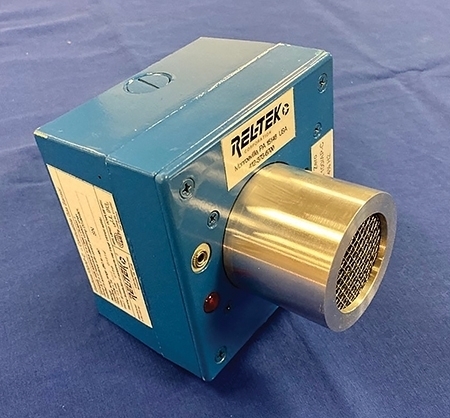
The Pennsylvania-based company was approved for U.S. and Canada for its intrinsically-safe hydrogen gas sensor capabilities
Bus propulsion options are always evolving. In the 1990s, gasoline and diesel fuels evolved to cleaner compressed natural gas (CNG), liquefied natural gas (LNG) and liquefied petroleum gas (LPG). In the 2010s, all-electric battery buses were introduced. To extend the battery range of buses and trucks in the 2020s, OEMS now offer onboard auxiliary diesel generators. Taking it to a new level, California is now forcing a “zero carbon” philosophy for new vehicle procurements. Auxiliary power on new buses will use batteries and hydrogen-powered fuel cells.
 To complicate matters, however, hydrogen is not compatible with the myriad CNG, LNG, and LPG gas detection systems presently used in bus garages and fueling stations throughout California.
To complicate matters, however, hydrogen is not compatible with the myriad CNG, LNG, and LPG gas detection systems presently used in bus garages and fueling stations throughout California.
A. CNG, LNG and LPG are all “Group D” gases, while hydrogen is a much more explosive “Group B” rating. Hence, for future use of H2 fuels, many bus and truck facilities will need to be upgraded for Class 1, Div 2, Group B classification.
B. Adding to the evolutionary pressures is the fact the ubiquitous NDIR optical sensors used throughout California are unable to respond to hydrogen gas. There is no optical absorption. This fact requires a change of sensor technology to one that does respond to hydrogen.
Rel-Tek Corporation in Monroeville, Pennsylvania, has been chasing these changes since the beginning of alt-fuel operations in circa 1990. Al Ketler, PE, president of Rel-Tek, said the company has seldom been stumped with a situation it could not handle. He and his staff provide consultation for clients needing assessments and recommendations for best approaches for safe operations. Rel-Tek was recently granted a “Group B” approval for its intrinsically safe GasBoss-H2 hydrogen sensor. This sensor is also backward compatible for CNG, LNG and LPG.
Being approved intrinsically safe, rather than explosion proof, permits this H2 sensor to be installed with normal wiring. And it can be serviced while under 24VDC power, two big advantages over XP sensor alternatives. XP devices cannot be opened for repair while under power in hazardous areas. Otherwise the site would need to be declassified by removing gas fueled vehicles from the area, involving a costly nuisance and lost production.
Notably, these new hydrogen sensors can be automatically calibrated. Rel-Tek pioneered in fully automatic calibration of large arrays of gas sensors, since its first MagiKal installation in 2001. Now, virtually all of Rel-Tek transit garage clients use MagiKal, including Golden Empire Transit, Kern High School District and SoCalGas service facility, all in Bakersfield, California. The California-based Gold Coast Transit in Oxnard and San Diego Transit in South Beach are also long-term clients using MagiKal. Rel-Tek has systems nationwide, including dozens in Texas. Cost savings pay dividends to users through use of MagiKal can exceed the initial system cost in less than a decade.
Rel-Tek’s own Millennia-DX data acquisition technology provides HMI graphics, data and alarm logging, complex control strategies, plus high-speed monitoring, timed at 120 sensors per second. NJ Transit, one of Rel-Tek’s largest installations at approximately five acres, has over 200 of its GasBoss CNG sensors which are surveilled for alarm conditions every 2.5 seconds.
Visit www.rel-tek.com for more information or call 1-800-783-9228.
